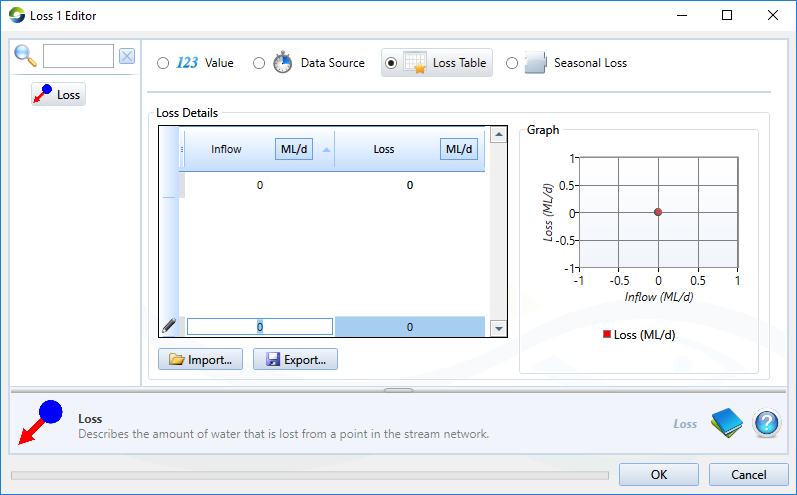Note: This is documentation for version 4.3 of Source. For a different version of Source, select the relevant space by using the Spaces menu in the toolbar above
Loss node
Losses in a river system can be represented in several ways. Some losses, such as reach evaporation, loss to groundwater and filling of dead storage can be simulated through a link. The loss node can be used to represent losses which are not captured by such explicit models. In Source, the loss node allows you to define a relationship between river flow and loss rate.
Figure 1. Loss node

Loss can be specified as either a constant value, by loading a time series file, using a piecewise linear function under Loss Table (entered manually or loaded from a .CSV file - format shown in Table 1) or specifying seasonal loss. Note that for the seasonal loss table (shown in Figure 1), units must set before importing using the Units button.
For a piecewise linear function, it is advised that you enter a flow rate relationship greater than the likely maximum simulated flow. If you do not, the linear relationship derived from the last two rows of the loss table will be used to calculate any projections. Refer to About piecewise linear editors for more information.
Table 1. Loss node (piecewise linear data file format)
| Row | Column (comma-separated) | |
|---|---|---|
| 1 | 2 | |
| 1 | Inflow (ML/d) | Loss (ML/d) |
| 2 | 0 | 0 |
| 3..n | inflow | loss |
Ownership can also be configured at the loss node. You can specify what proportion each owner in the system will lose. Refer to Ownership.
